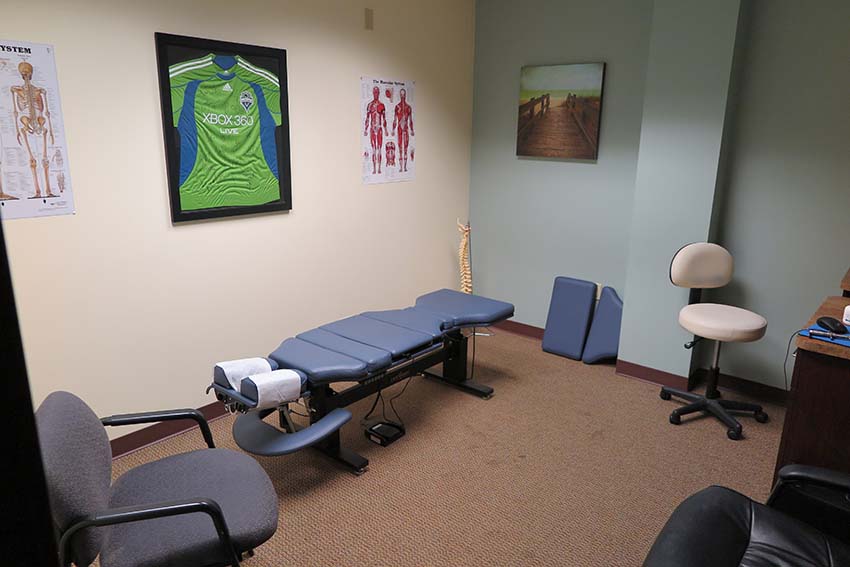Test Your Chiropractic IQ
Here are 10 True or False Questions about Chiropractic. Let’s see how many you get right.
- True or False: Chiropractic adjustments are painful.
- Most of the time spinal adjustments do not hurt at all. Most patients feel relief after an adjustment. In some cases, such as in an acute injury, an adjustment may be uncomfortable, but it should never hurt. If you do experience pain tell your doctor so they can try an alternative approach.
- True of False – Chiropractic neck adjustments cause stroke.
- This claim is false. Current research suggests that the chance of suffering a stroke from a chiropractic adjustment is 1:8,000,000. Research into the safety of chiropractic care and manual manipulation has shown that is much safer compared to other forms of health care.
- True of False – Once you start seeing a chiropractic doctor, you have to keep going for the rest of your life.
- Regular chiropractic adjustments are part of a healthy lifestyle, but every patient has a choice whether or not to continue with regular checkups. Checkup frequency is different for everyone. It could once a month, every six weeks or even less often for some. After becoming a chiropractic patient, you become better at listening to your body and knowing when you need an adjustment.
- True of False – Chiropractors only treat back pain.
- It is true that people typically see a chiropractor for back pain, however chiropractors are able to treat people for an assortment of other conditions such as headaches, sciatica, vertigo, and extremity injuries such as carpal tunnel. Some chiropractic that are trained in soft tissue therapies such as Graston Technique, A-Stim or A.R.T can treat even more conditions such as shoulder tendonitis, elbow tendonitis, plantar fasciitis, and chronic pain associated trigger points an myofascial adhesions.
- True of False – Chiropractors have more schooling than medical doctors.
- While is true that a chiropractic degree requires 2,887 of class hours and a medical degree requires 2,756, the training on the various topics in vastly different. Chiropractic schooling pays particular emphasis to body and spinal biomechanics, skeletal conditions, adjusting techniques nutrition, and neurology.
- True of False – Prescription medication and over the counter drugs are safe.
- Adverse reaction to CORRECTLY prescribed drugs are the 3rd leading cause of death in America. So many prescription drugs can lead to the development of other conditions. Did you know that statin drugs can lead not only lead to aches and pain in the muscles and joints, but can contribute to the development of type 2 diabetes?
- True or False – Cracking my own back is the same as a chiropractic adjustment.
- The purpose of the chiropractic adjustment is to restore motion to a restricted, dysfunctional joint. Positioning of those dysfunctional joints at certain angles is essential. When you attempt to adjust yourself, any joint that is capable of moving can achieve a sound, which makes people think that their self-manipulation was successful. Typically, a person who self- adjusts are furthering joint hypo-mobility and further restricting joints that are already dysfunctional.
- True of False – You need a referral to see a Chiropractor.
- In almost all instances you do not need a referral for a chiropractor. You do not need a referral if you have insurance or you have been involved in a motor vehicle collision. If you have been injured on the job, you may choose to see a chiropractor first if you wish. If you open a claim with a medical provider first, then you will need a referral.
- True or False – Chiropractic Care is Cost Effective.
- Studies have shown that chiropractic care is more cost effective than traditional medicine, especially for biomechanics issues such as back and neck pain. Studies have also shown that people who seek regular chiropractic care are sick less often and missed less time from work due to sickness or injury.
- True or False – The only way to be adjusted is with manual manipulation.
- Chiropractors are taught multiple adjusting styles to suit the individual patient. Some people do not like the manual adjustment or should not be adjusted that way. Other people prefer the manual adjustment or Drop Technique, and do not like the Activator tool. Everyone is different. Let your chiropractor know how you feel before and after an adjustment so your adjustment is an enjoyable experience.

